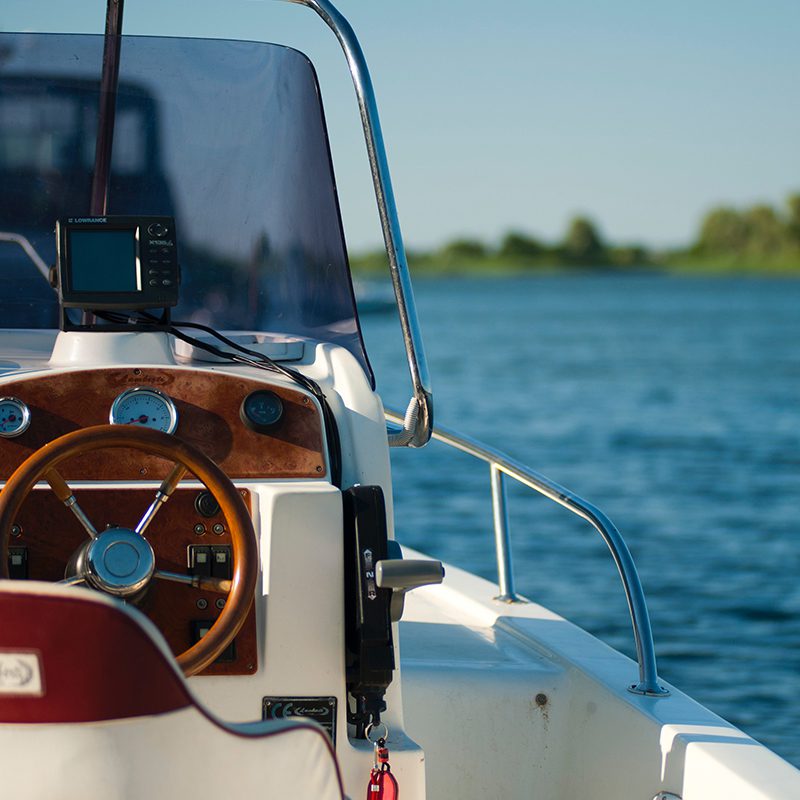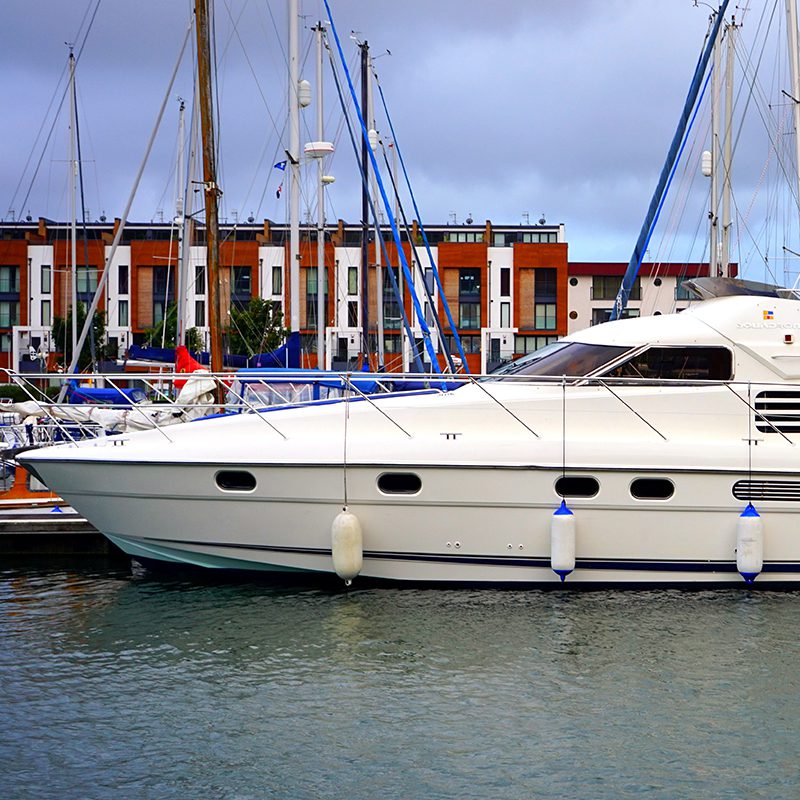Pre-launch checks are essential to help ensure the smooth sailing of any vessel. Marine hydraulics play a vital role in vessel’s various functions and systems, so they must be checked regularly before launch and during operation.
For that reason, hydraulic steering and vessel stabilizing system maintenance is essential aboard boats and yachts outfitted with these critical systems. This means marine techs need a reliable diagnostic tool in hand that provides wiring diagrams, systems schematics, technical data like torque specifications and belt routing along with troubleshooting and repair procedures to check the vital hydraulic steering system components before each launch from the dock. So, Triad Diagnostic Solutions is here with some of the important checks marine technician’s should follow and how Jaltest Marine Kits are a part of that equation

Inspect the hydraulic hoses for signs of wear and tear.
One essential check to make is inspecting the hoses for signs of wear and tear. These hoses are responsible for powering some of the most critical systems on your yacht, such as the steering and anchor, and any failure could be catastrophic.
Look for signs of cracking, bulging, or cuts, mainly where the hoses connect to fittings or flanges. It is also essential to ensure that the hydraulic hose clamps and fittings are secure and properly tightened and that there are no signs of leaks or corrosion.
Check the hydraulic pressure relief valves for proper operation.
Ensure that the hydraulic pressure relief valves are operating correctly. These valves are essential in regulating pressure within the boat’s hydraulic steering system, preventing equipment from damaging or failing. If you neglect to check these valves, you risk compromising the functionality and longevity of your boat or yacht’s hydraulic system.
To check their operation, inspect the valve’s condition, confirm that the set pressure matches the system’s operating pressure, and validate that they open and close correctly. These checks are critical to prevent potential safety hazards and ensure your yacht operates correctly.
Test all hydraulic pumps for correct operation.
Test all hydraulic pumps for correct operation to ensure that the pumps are operating and working at optimal capacity. In doing so, you’ll be able to detect any issues that must be addressed before the vessel takes to the water.
Hydraulic steering systems are crucial, so take all necessary precautions to ensure the boat or yacht is seaworthy. This will help identify any potential issues before the voyage, decreasing the risk of a malfunctioning hydraulic pump failure while the vessel is out at sea.


Ensure all valves, solenoids, cylinders, and manifolds are working properly.
Before setting sail, inspecting all valves, solenoids, cylinders, and manifolds in proper working condition is essential. If they are not performing as they should, it’s best to take care of any issues now rather than later. These components take on considerable strain with regular usage and must be routinely monitored for preventive maintenance procedures.
Check the outboard hydraulic steering systems. This system should be inspected for leaks or weak points in the hoses, fittings, and seals. A thorough visual inspection and testing of the hydraulic steering system under load can help identify any potential issues before they become significant problems.
Malfunctioning parts may compromise the vessel’s safety, so pre-launch inspections of these critical components should always be noticed. Additionally, spending time understanding how these components work and how they interact with each other will help you identify areas where defects may occur from wear and tear over time. This can be a great preventative measure to avoid complications in the open waters.
Check the fluid levels in the tanks and refill them as necessary.
Check the fluid levels examined in the hydraulic fluid reservoir to ensure that the hydraulic fluid levels are at the recommended capacity. Low hydraulic fluid levels also indicate leakage in the system that needs to be inspected and repaired. Without proper fluid levels, the hydraulic system won’t be able to function at its best, which can lead to severe problems or even accidents out on the water. Not only can low fluid levels lead to poor performance, but they can also cause irreversible damage to the system.
Perform a thorough inspection of all hydraulic components for signs of corrosion or damage.
Have a thorough inspection conducted on all hydraulic components of the boat or yacht. After all, there is no worse feeling than being stranded in the middle of the ocean due to a malfunctioning system or hydraulic fluid leaks. Corrosion or damage to any hydraulic steering system components can affect the vessel’s performance. Therefore, checking all the hoses, pumps, valves, and cylinders for any signs of corrosion or damage is essential.

Ensure Boats or Yacht Run Smoothly with Triad Diagnostic Solutions
Marine technicians have a huge responsibility to their customers to not only have the knowledge but the tools to properly maintain and repair boats and yachts hydraulic systems. That’s where Triad Diagnostic Solutions comes in. As a Master Distributor of Jaltest tools, we offer an all-inclusive solution for all your diagnostic and repair needs.
With the Jaltest Full Marine Diagnostic kit, you’ll have access to the same commands as OEM dealers, ensuring your yacht’s hydraulic systems run smoothly. Say goodbye to second-guessing repairs and hours spent troubleshooting error codes. The Jaltest software covers a variety of makes and models of onboard motors, providing your yacht crew and technicians with step-by-step instructions, repair guides, and training and technical support.
So, snag your kit today before your customers set sail!
Photo by Eugene Chystiakov on Unsplash
Photo by Lukas
Photo by Oleksandr Pidvalnyi
Photo by Edinson Acevedo
Photo by Mike Bird

